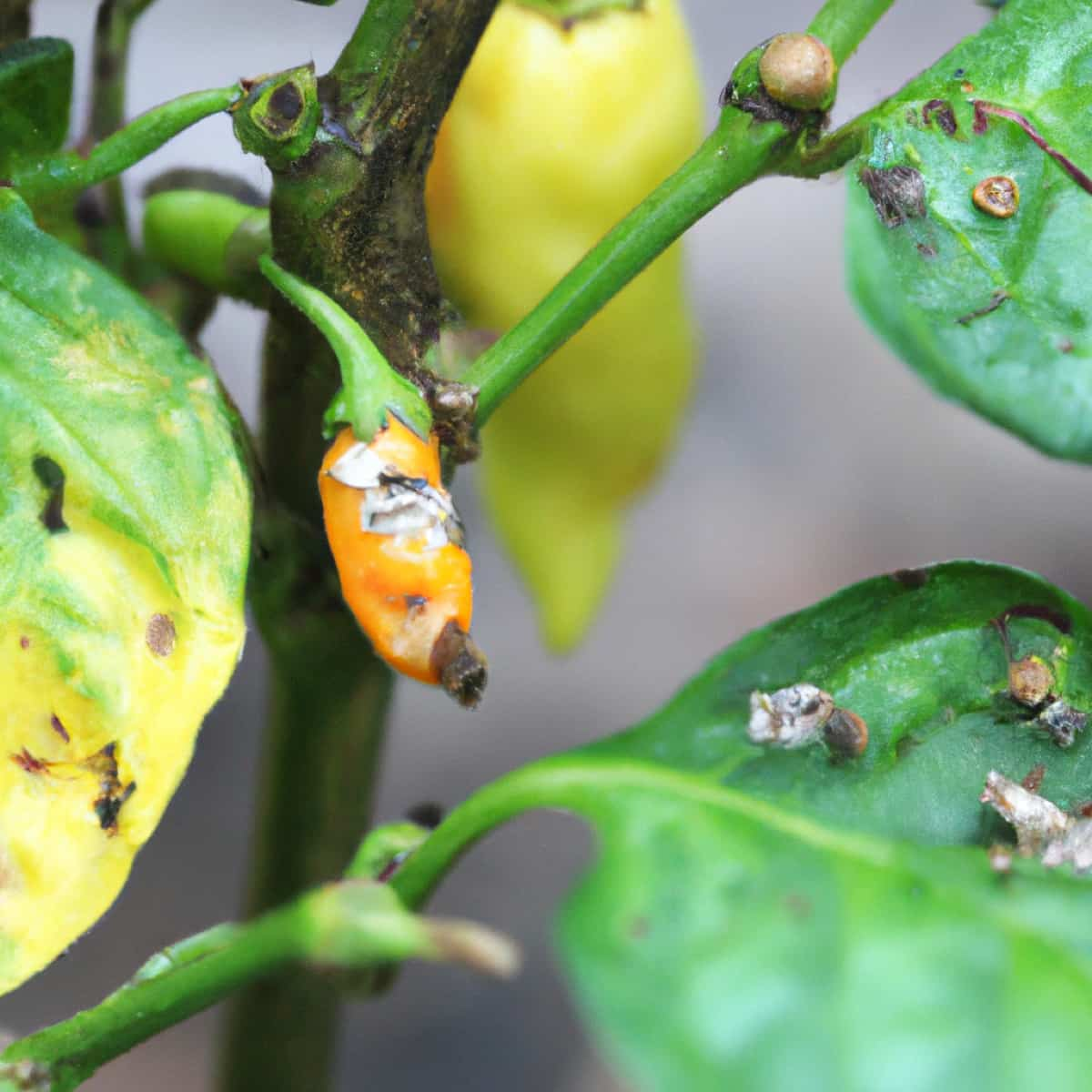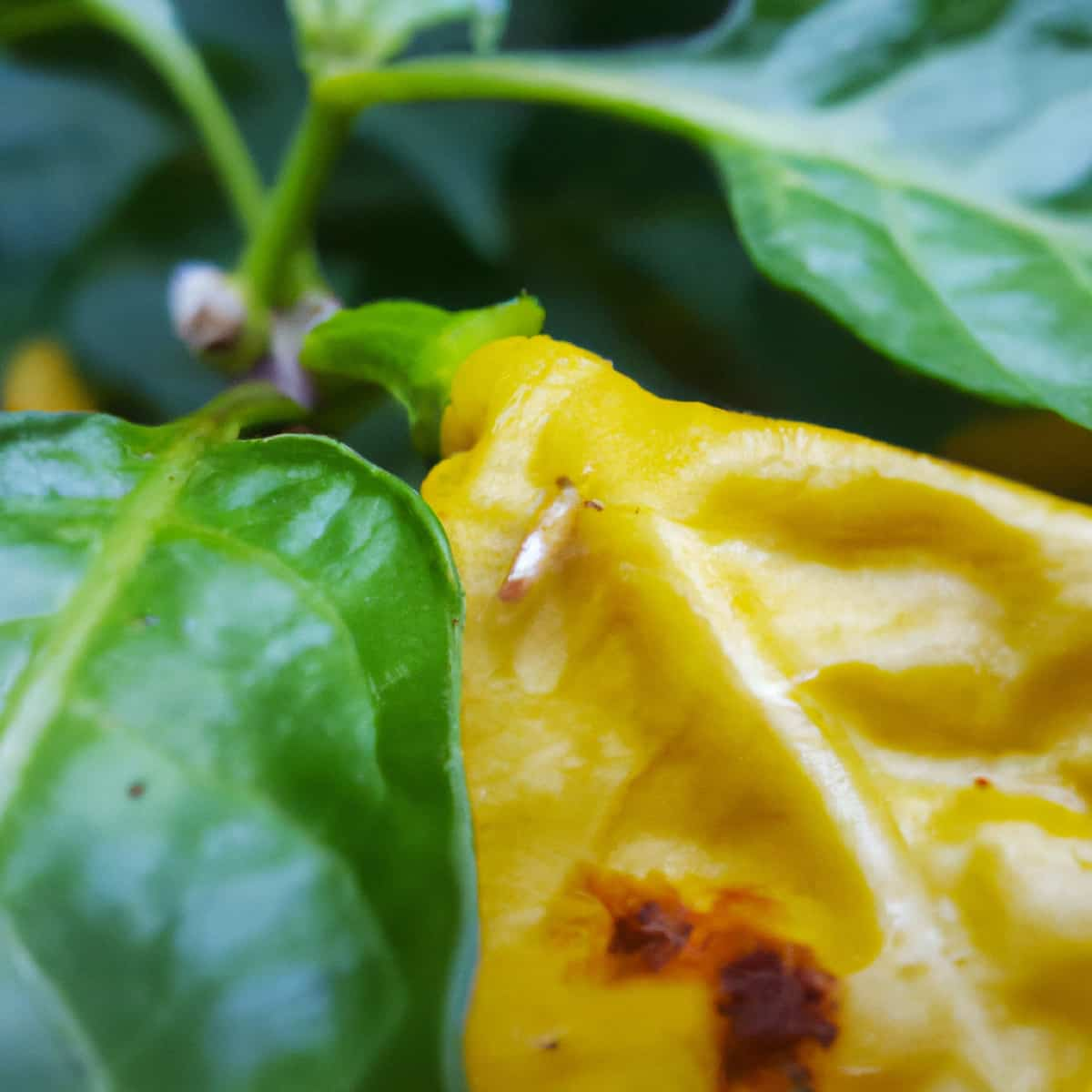The Chilli Yellow Mite, Polyphagotarsonemus latus, belonging to the Family Tarsonemidae of the Order Acarina, is a tiny arthropod insect pest of Chilli crops, causing significant yield losses and reducing the quality of crops worldwide. The Chilli Yellow Mite pest is also called the Muranai mite, Broad mite, or Spider mite. The Chilli Yellow Mite pest is known to attack Chilli crops throughout their growth cycle, from seedling to maturity. These invasive pests are highly destructive, causing severe damage to the leaves and fruits of the Chilli plant.

Effective management strategies are essential to minimize the impact of this pest on Chilli production. To effectively manage this pest, it is important to understand its life cycle, its preferred habitats, and the best methods for controlling it. This article will provide an overview and discussion of the Chilli Yellow Mite Pest in Chilli crops, including its symptoms, identification techniques, and control.
Chilli Yellow Mite Pest Management
Life Cycle of Chilli Yellow Mite Pest in Chilli Crop
The life cycle of the Chilli Yellow Mite pest has four stages. They are egg, larva, nymph, and adult. The adult female Chilli Yellow Mite lays eggs on the surface of the leaves or stems of the Chilli plant. The eggs are usually laid in clusters and can hatch within 2-3 days, depending on temperature and humidity. Once the eggs hatch, the Chilli Yellow Mite enters the larval stage. The larvae feed on the plant sap, which lasts about 1-2 days, and then molts into the next stage.
The nymphs are slightly larger than the larvae and continue feeding on the plant sap. The protonymph stage lasts about 1-2 days, after which they molt into adulthood. The female mites are larger than the males and can lay up to 60 eggs during their lifetime. The adult stage lasts 2-3 days before the mite dies. The Chilli Yellow Mite has a relatively short life cycle of 6-12 days, depending on environmental conditions.
Occurrence of Chilli Yellow Mite Pest in Chilli Crop
- Location of Chilli Yellow Mite Pest: This pest infests Chilli crops in India, Bangladesh, Nepal, Africa, Sri Lanka, China, Thailand, Malaysia, Vietnam, Indonesia, the United States, Mexico, Brazil, Colombia, Ecuador, the Philippines, and Australia.
- Host Range: The Chilli Yellow Mite pest infects crops like Chilli, Peppers, Eggplant, Tomato, Cucumber, Beans, Roses, Chrysanthemums, and Gerberas.
Factors Favoring the Population Increase of Chilli Yellow Mite Pest in Chilli Crop
- The pest thrives in warm and humid conditions and prefers warm temperatures between 25-30°C. The pest’s lifespan can be shortened at higher temperatures, and it becomes less active.
- The pest thrives in high-humidity conditions, and its population can increase rapidly when the relative humidity is above 70%. Therefore, areas with high humidity and low airflow favor pest development.
- Over-fertilization can lead to rapid plant growth and lush foliage, providing ideal conditions for the pest to thrive.
- Overwatering can also increase humidity levels, making the plants more susceptible to infestation.
- Overusing broad-spectrum insecticides can eliminate natural predators of the pest, allowing their population to increase rapidly.
- Repeated use of the same pesticide can also lead to the development of pesticide-resistant strains of the pest.
Identification of Chilli Yellow Mite Pest in Chilli Crop
- Egg: These eggs are oval-shaped, transparent, and about 0.1 mm long.
- Larva: The larvae are about 0.15 mm long, have only three pairs of legs, and are colorless.
- Nymph: The nymph develops two more pairs of legs, making a total of five pairs of legs.
- Adult: The adult mite has a rounded body shape and is about 0.25 mm long. The adults have eight legs and are light yellow to orange-brown.
Damage Symptoms of Chilli Yellow Mite Pest in Chilli Crop
- The affected leaves show downward curling and crinkling symptoms followed by blister spots and can also turn into an inverted boat shape.
- The petioles elongate and resemble a rat tail appearance and eventually die.
- The mites feed on the plant sap, causing yellowing of the leaves and stunted growth.
- They can also damage the fruit, causing deformities or hardening and reducing the yield.
Percentage of Yield Loss in Chillis Due to Chilli Yellow Mite Pest
- In India, the yield losses due to Chilli Yellow Mite pests are 25-80%. In Bangladesh, the losses are 40%. In Nepal, the losses are 70%. In Thailand, the yield loss is 30%. In Malaysia, it is 40%. In Vietnam, the losses are 50%. In Sri Lanka, the losses are 50%. In Indonesia, the losses are 60%. In Africa, it is 70%. In the United States, it is 5-10%. In Mexico, it is 40%. In Brazil, it is 30%. In China, it is 50%.
- In Colombia, the losses are 50%. In Ecuador, it is 60%. In Australia, it is 40%. In the Philippines, the yield losses are 50%. The Economic Threshold Level (ETL) for the Chilli Yellow Mite pest is set at 5-10 mites per leaf.
In case you missed it: Chilli Cutworm Pest Management: Symptoms, Treatment, Chemical, Biological, and Organic Control

Cultural Control of Chilli Yellow Mite Pest in Chilli Crop
- Rotate crops with non-solanaceous crops such as legumes or cereals to disrupt the pest’s life cycle and reduce its build-up in the soil.
- Removing weeds and plant debris can help reduce the population of overwintering mites.
- Planting at the beginning of the rainy season and harvesting before the winter months can help avoid severe pest outbreaks.
- Regular pruning of infested leaves and branches can help reduce the pest populations.
- Intercropping Chilli with other crops like marigold, coriander, and garlic can reduce pest populations. These plants emit compounds that repel or mask the presence of the pest, reducing their feeding and reproduction.
- Use Sticky traps to monitor the presence and population of Chilli Yellow Mite Pest in the crop.
Biological Control of Chilli Yellow Mite Pest in Chilli Crop
- Predatory mites like Phytoseiulus persimilis, Amblyseius ovalis, and Neoseiulus californicus are commercially available and can help reduce the pest population.
- Parasitic wasps, like the species of Encarsia and Eretmocerus, parasitize the pest’s eggs, leading to their death.
- Predatory insects like ladybirds, lacewings, and predatory bugs can feed on the pest, especially during the early stages of infestation.
- Entomopathogenic fungi such as Beauveria bassiana and Metarhizium anisopliae can also control the pest population.
- Entomopathogenic nematodes like Steinernema carpocapsae and Heterorhabditis bacteriophora effectively control the pest population.
Chemical Control of Chilli Yellow Mite Pest in Chilli Crop
- Spray insecticides on the crops like Buprofezin, Diafenthiuron, Wettable Sulphur, Quinalphos, and Dicofol on the foliage to control the pest.
- Apply and mix Phorate or Phosalone to the soil to control the pest.
Organic Control of Chilli Yellow Mite Pest in Chilli Crop
- Applying organic manure, such as compost or animal waste, can help maintain soil health and promote plant growth, making them less susceptible.
- Plant extracts from neem, garlic, cinnamon, ginger, turmeric, hot pepper, and Chilli can be applied to manage the infestation.
- Pyrethrin obtained from the flowers of certain chrysanthemum species will paralyze and kill the pest.
- Spinosad produced by the soil bacterium Saccharopolyspora spinosa should be sprayed on the leaves and stems of Chilli plants to control the pest.
- Mineral-based insecticides such as diatomaceous earth and kaolin clay can control the pest by physically disrupting the pest’s cuticle and causing dehydration.
- Pongamia oil or Tea tree oil can help to improve the plant’s resistance to pests and diseases, while citrus oil helps to repel pests and improve plant health.
Preventive Measures for Control of Chilli Yellow Mite Pest in Chilli Crop
- Planting healthy and resistant varieties can prevent pest incidence.
- Proper irrigation and fertilization practices can help maintain plant health and reduce the risk of pest infestation.
- Use row covers to prevent the pest from accessing the crop and reduce the chances of infestations.
- Monitor the crops regularly to identify pest infestation in the early stages to keep it under control.
In case you missed it: Chilli Fruit Borer Pest Management: Symptoms, Treatment, Chemical, Biological, and Organic Control

Conclusion
The Chilli Yellow Mite Pest, Polyphagotarsonemus latus, is a major pest that affects Chilli crops worldwide, causing significant yield losses and economic damage. To manage the pest, integrated pest management strategies that include cultural, biological, and chemical control measures are recommended. A combination of these measures can help manage pest infestations and maintain healthy Chilli crops.
- Beneficial Insects in Pest Management
- Natural Solutions for Pest Control in Flower Gardens
- Types of Fungicides Used in Agriculture
- Common Issues in the Fruit Development Stage of Pomegranate Farming
- Fruit Development Issues in Papaya: Easy Solutions and Treatment
- Soil-Borne Diseases and How to Protect Your Plants
- Practices to Prevent Disease Spread in the Garden
- From Wilted to Thriving: How to Treat Root Rot Naturally in Houseplants
- Natural Remedies to Cure Brown Spots on Fig Tree Leaves